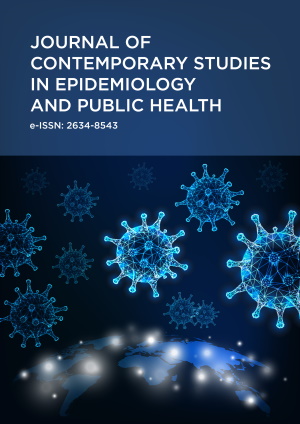Abstract
Introduction: Artificial food colorings are increasingly used to make the color and appearance of foods more attractive. One commonly used food dye is E133, international-coded brilliant blue (BB). According to the European Food Safety Authority panel results in 2010, it was determined that BB daily remained below the acceptable daily intake (ADI) value for adults and exceeded ADI value for children. The purpose of this study was to investigate the effects of BB on angiogenesis and oxidative stress in the chorioallantoic membrane model.
Materials & methods: In this investigation, fertilized chick eggs free of specific pathogens were used. The eggs that were not fully grown or fertilized were excluded. 50 embryos were distributed into five groups of 10 each. The negative control group was the control group, the positive control group was the bevacizumab group, and three different BB dosages (10-4 M, 10-5 M, and 10-6 M) were identified. At the end of the experiment, anti-angiogenesis scoring, and total antioxidant-oxidant capacity were evaluated.
Results: According to the average score values, the control group had no anti-angiogenic impact, but the bevacizumab group had a strong anti-angiogenic effect (average score 1.1). Furthermore, the 10-4 M BB group had a weak anti-angiogenic impact (average score of 0.7), while the 10-5 M and 10-6 M BB groups had no anti-angiogenic effect (average score of 0.4 and 0.2, respectively). As a result of one-way analysis of variance test, it was seen that BB significantly increased total oxidant capacity and oxidative stress index values in proportion to the increase in dose (p<0.05).
Conclusions: BB’s oxidant and anti-angiogenic effects indicate that high doses of processed foods containing artificial food dyes carry a risk for viable growth. Since there are not enough studies in the literature showing the oxidant or antiangiogenic effects of BB in chorioallantoic membrane model, the original data we presented in this study are pioneering.
License
This is an open access article distributed under the Creative Commons Attribution License which permits unrestricted use, distribution, and reproduction in any medium, provided the original work is properly cited.
Article Type: Original Article
J CONTEMP STUD EPIDEMIOL PUBLIC HEALTH, Volume 4, Issue 2, 2023, Article No: ep23007
https://doi.org/10.29333/jconseph/13706
Publication date: 20 Sep 2023
Article Views: 1899
Article Downloads: 919
Open Access References How to cite this article
 Full Text (PDF)
Full Text (PDF)